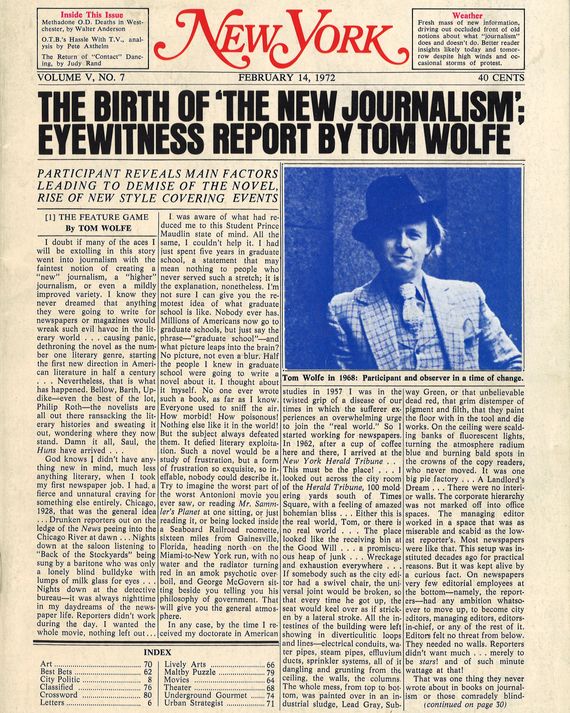News Articles - Questions
The 4-Minute Rule for News Articles
Table of ContentsNot known Incorrect Statements About News Articles 3 Easy Facts About News Articles ShownIndicators on News Articles You Should KnowNews Articles Fundamentals ExplainedThe Buzz on News Articles
Good expertise of different topics gives pupils an one-upmanship over their peers. Although electronic and social media are conveniently accessible, we need to not forget exactly how important it is to check out the papers. Parents have to try and instill the habit of checking out a paper as an everyday regimen to continue the heritage of the revered print medium.Information tales additionally contain at least one of the following essential attributes family member to the desired target market: distance, prestige, timeliness, human passion, oddity, or consequence.
Within these limits, information tales additionally intend to be thorough. Among the larger and extra respected papers, fairness and equilibrium is a major factor in offering info.
Newspapers with a global audience, as an example, have a tendency to use a much more formal design of writing. The specific selections made by a news electrical outlet's editor or editorial board are often gathered in a design guide; usual style overviews include the and the United States News Style Publication. The main objectives of news writing can be summed up by the ABCs of journalism: accuracy, brevity, and clearness.
The 2-Minute Rule for News Articles
As a guideline, journalists will not utilize a long word when a short one will do. They use subject-verb-object building and vibrant, energetic prose (see Grammar). They use stories, instances and metaphors, and they seldom depend upon generalizations or abstract ideas. News authors attempt to stay clear of making use of the very same word a lot more than when in a paragraph (in some cases called an "echo" or "word mirror").
Nevertheless, headlines occasionally leave out the subject (e.g., "Leaps From Watercraft, Catches in Wheel") or verb (e.g., "Feline woman fortunate"). A subhead (likewise subhed, sub-headline, subheading, caption, deck or dek) can be either a subservient title under the primary headline, or the heading of a subsection of the post. It is a heading that precedes the major text, or a team of paragraphs of the primary message.
of a write-up topic, informant, or interviewee), it is described as a drawn quotation or pull quote. Extra signboards of any of these types might show up later in the post (specifically on succeeding web pages) to tempt additional analysis. Journalistic internet sites in some cases make use of animation techniques to switch one signboard for one more (e.g.
How News Articles can Save You Time, Stress, and Money.
Such signboards are also made use of as guidelines to the post in various other sections of the publication or site, or as promotions for the item in other publication or websites. News release of the Swiss government. Normal structure with title, lead paragraph (recap in bold), various other paragraphs (details) and get in touch with info.

Instance of a hard-lead paragraph NASA is proposing another area task. The budget plan demands approximately $10 billion for the project.
The NASA statement came as the firm requested $10 billion of appropriations for the task. An "off-lead" is the 2nd crucial front page news of the day. The off-lead appears either in the leading left edge, or straight listed below the lead on the right. To "bury the lead" is to begin the write-up with history information or details of secondary value to the visitors, forcing the original source them to read more deeply right into a short article than they should need to in order to uncover the necessary factors.
News Articles - An Overview
Usual use is that or 2 sentences each form their very own paragraph. Journalists generally explain the organization or structure of a newspaper article as an inverted pyramid. The vital and most fascinating components of a tale are placed at the beginning, with supporting details complying with in order of reducing value.
It permits people to explore a topic to just the depth that their interest takes them, and without the imposition of details or nuances that they can consider irrelevant, but still making that details readily available to more interested viewers. The upside down pyramid structure also allows articles to be cut to any kind of approximate size throughout design, to fit in the space available.
Some authors start their stories with the "1-2-3 lead", yet there are many kinds of lead readily available. A twist can refer to several things: The last tale in the news broadcast; a "delighted" tale to finish the program.
Longer articles, such as magazine cover short articles and the items that lead the within areas of a newspaper, are recognized as. Function tales vary from straight news in a number of methods.
Facts About News Articles Uncovered
The reporter frequently information interactions with interview topics, making the piece more personal. An attribute's initial paragraphs frequently associate an appealing moment or event, as in an "unscientific lead". From the particulars of a person or episode, special info its view quickly expands to generalities about the story's topic. The area that signals what a feature has to do basics with is called the or signboard.

The Editor's Toolbox: A Reference Guide for Beginners and Professionals (2001) Allan M. Siegal and William G. Connolly. The New York City Times Guidebook of Design and Use: The Official Style Guide Made Use Of by the Writers and Editors of the Globe's Many Authoritative Newspaper (2002) M. L. Stein, Susan Paterno, and R.